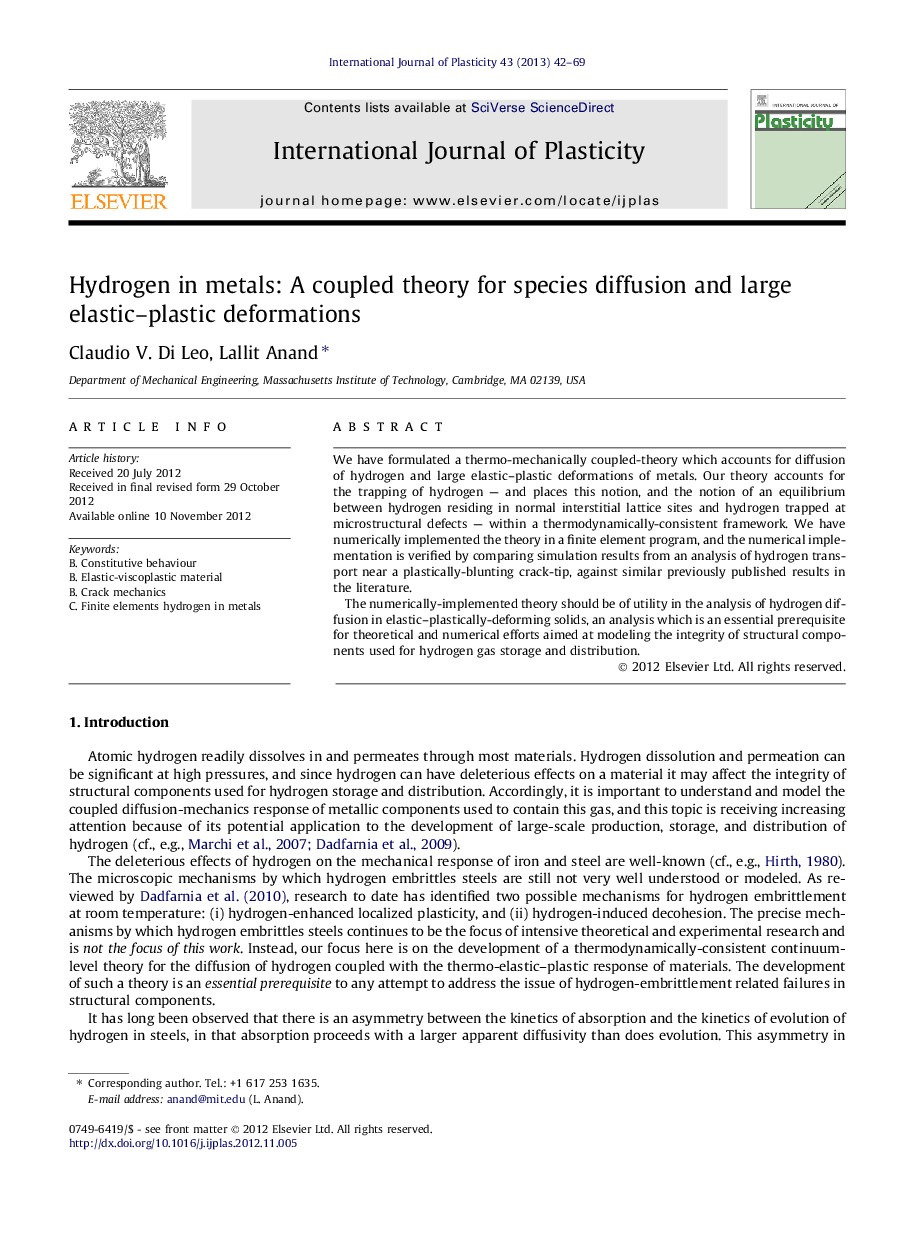| Article ID | Journal | Published Year | Pages | File Type |
|---|---|---|---|---|
| 786922 | International Journal of Plasticity | 2013 | 28 Pages |
We have formulated a thermo-mechanically coupled-theory which accounts for diffusion of hydrogen and large elastic–plastic deformations of metals. Our theory accounts for the trapping of hydrogen — and places this notion, and the notion of an equilibrium between hydrogen residing in normal interstitial lattice sites and hydrogen trapped at microstructural defects — within a thermodynamically-consistent framework. We have numerically implemented the theory in a finite element program, and the numerical implementation is verified by comparing simulation results from an analysis of hydrogen transport near a plastically-blunting crack-tip, against similar previously published results in the literature.The numerically-implemented theory should be of utility in the analysis of hydrogen diffusion in elastic–plastically-deforming solids, an analysis which is an essential prerequisite for theoretical and numerical efforts aimed at modeling the integrity of structural components used for hydrogen gas storage and distribution.
► A coupled-theory for hydrogen diffusion and large elastic–plastic deformations is developed. ► Trapping of hydrogen is accounted for within a thermodynamically-consistent framework. ► The theory has been numerically implemented and verified against published results. ► The use of a constant chemical potential boundary condition is studied.
